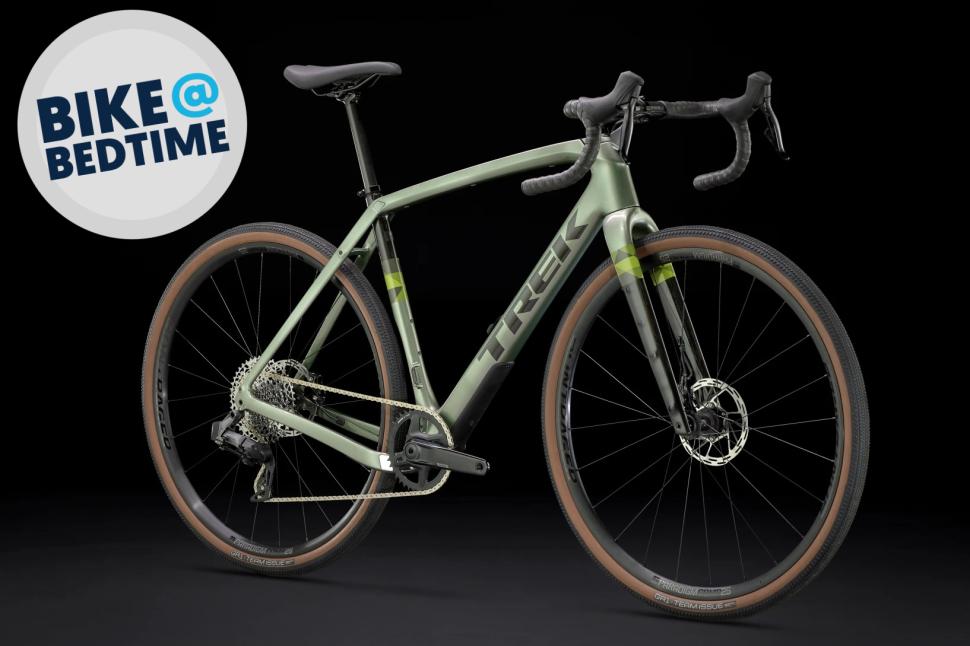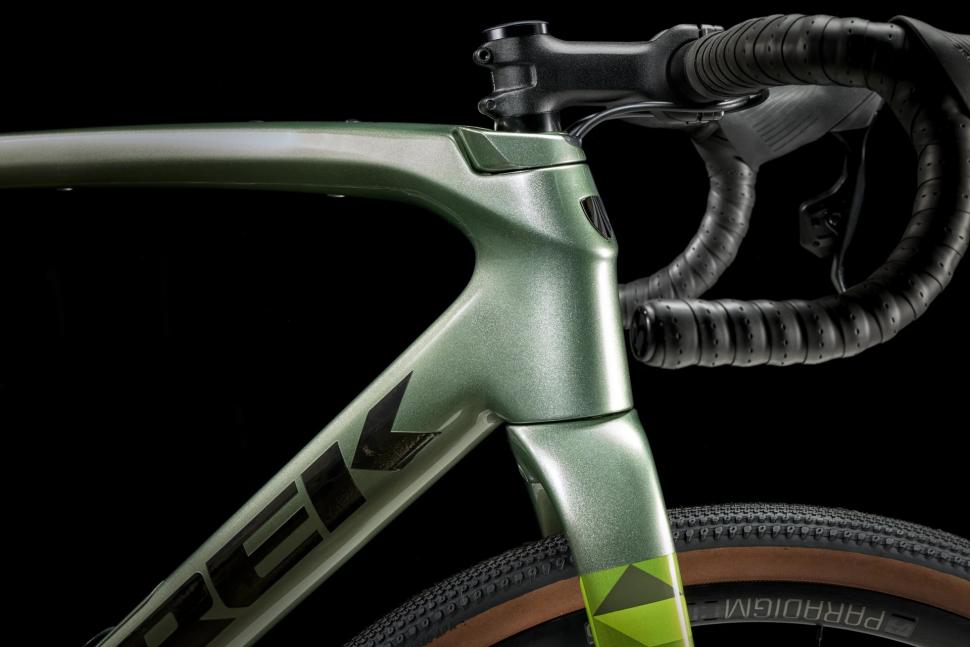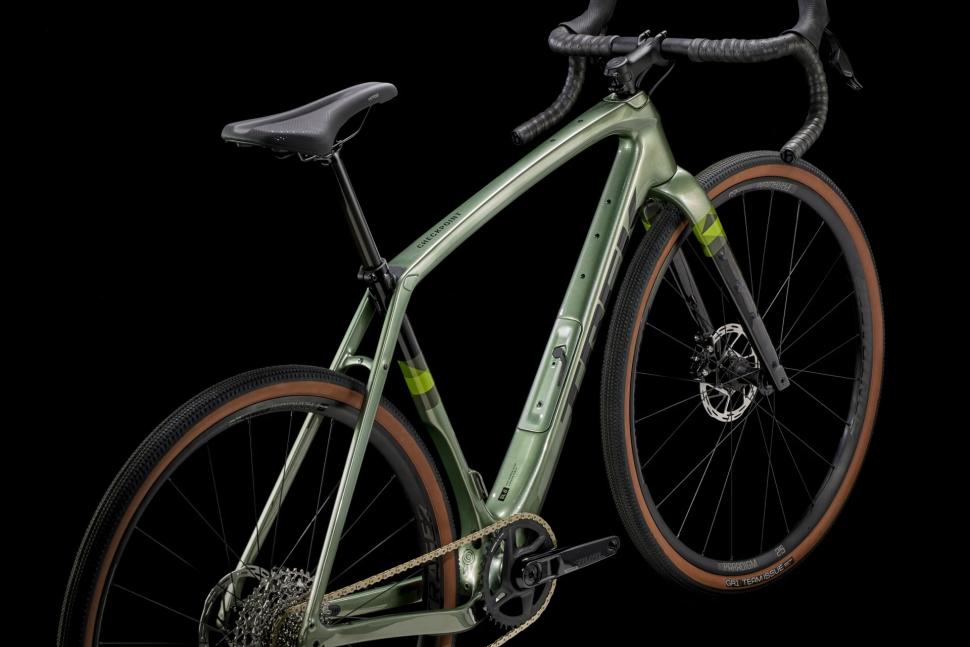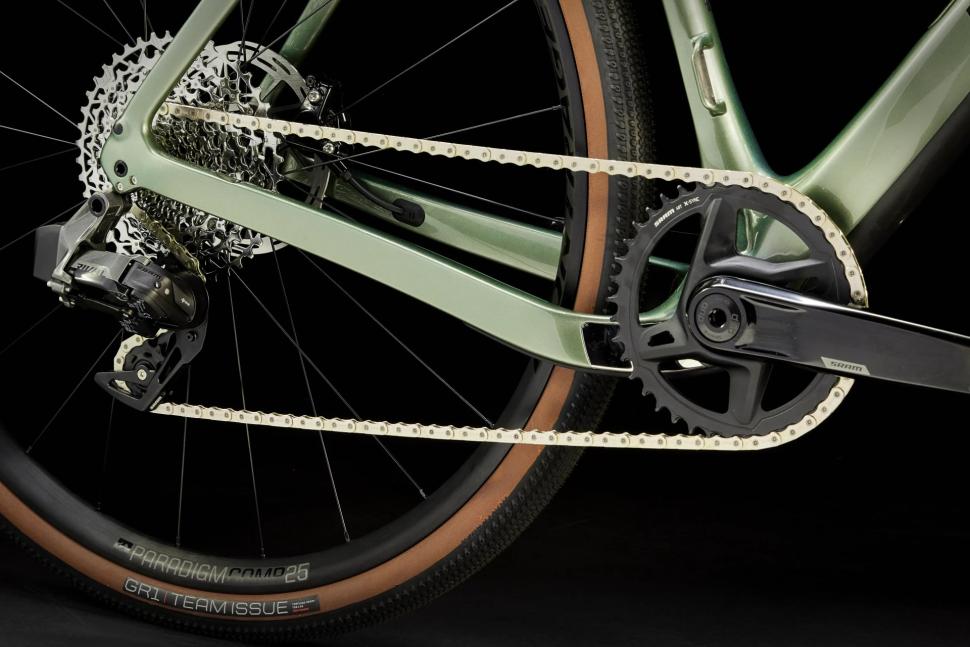- News
- Reviews
- Bikes
- Components
- Bar tape & grips
- Bottom brackets
- Brake & gear cables
- Brake & STI levers
- Brake pads & spares
- Brakes
- Cassettes & freewheels
- Chains
- Chainsets & chainrings
- Derailleurs - front
- Derailleurs - rear
- Forks
- Gear levers & shifters
- Groupsets
- Handlebars & extensions
- Headsets
- Hubs
- Inner tubes
- Pedals
- Quick releases & skewers
- Saddles
- Seatposts
- Stems
- Wheels
- Tyres
- Tubeless valves
- Accessories
- Accessories - misc
- Computer mounts
- Bags
- Bar ends
- Bike bags & cases
- Bottle cages
- Bottles
- Cameras
- Car racks
- Child seats
- Computers
- Glasses
- GPS units
- Helmets
- Lights - front
- Lights - rear
- Lights - sets
- Locks
- Mirrors
- Mudguards
- Racks
- Pumps & CO2 inflators
- Puncture kits
- Reflectives
- Smart watches
- Stands and racks
- Trailers
- Clothing
- Health, fitness and nutrition
- Tools and workshop
- Miscellaneous
- Buyers Guides
- Features
- Forum
- Recommends
- Podcast
feature
 2024 Trek Checkpoint SL 6 AXS - 1 (1)
2024 Trek Checkpoint SL 6 AXS - 1 (1)Take a look at the smooth-riding Trek Checkpoint SL 6 AXS gravel bike
Featuring a lightweight carbon frame, ride-smoothing IsoSpeed, and a SRAM wireless electronic groupset, Trek’s Checkpoint SL 6 AXS (£4,300) is a gravel beast that comes with lots of well-thought-out details. If it’s not at the price point you’re after, Trek offers Checkpoints from £1,450 (the aluminium ALR 4) right up to £12,050 (the SLR 9 AXS).
We were prompted to tell you about the Trek Checkpoint by Matthew Holmes winning the Gralloch Gravel Race in the UCI Gravel World Series at the weekend. Holmes was riding a top-level Trek Checkpoint SLR.
> Best gravel bikes 2024 — adventure-ready rides for leaving the tarmac behind
The SLRs are designed for racing whereas the Checkpoint SLs – such as the SL 6 AXS we’re focusing on here – are intended for adventure, whether going out exploring on a day ride or heading off on an epic trip. Trek describes the Checkpoint SL as “a true gravel powerhouse and a great choice for serious all-road adventurers”.
> Trek overhauls Checkpoint gravel range with updated geometry & new top-level platform
Trek introduced a ‘progressive’ geometry with the Checkpoint SLR back in 2021, and the SL and aluminium ALR bikes have switched over to this too.
The geometry features a front centre – the distance from the centre of the bottom bracket to the front axle – that’s 2cm longer than previously, specced with a shorter stem and handlebar to compensate. We’ve seen many brands take a similar approach with their gravel bikes.
“Extending the wheelbase gives some stability and allows the rider to be behind the front wheel and able to get their weight back to get over obstacles a little bit easier,” said Travis Brown, lead project engineer for the Checkpoint. “That stability allows you to put the power down if you’re in a race event or just on a straight, flat road.”
> Check out our Trek Domane SL Disc frameset review
Every bike comes with a stem that’s 1cm shorter than it used to be. For example, the 52cm and 54cm versions of the Checkpoint SL 6 AXS come with an 80mm stem. The SL and ALR models feature a Bontrager Elite Gravel handlebar with a 75mm reach and a 128mm drop. As mentioned, Trek has been taking this approach for several years now, so it’s well-proven.
The Checkpoint SL is made from Trek’s 500 Series OCLV carbon. That might not mean a whole lot to you but Trek divides its carbon fibre into various series; the higher the number, the stiffer and lighter the frame, essentially. The Checkpoint SLRs are 700 Series OCLV while the Madone SLR and Emonda SLR road bikes are 800 Series.
Like the Checkpoint SLR, the SL features Trek’s IsoSpeed technology. If you’ve not encountered IsoSpeed before, it’s the brand’s system for adding compliance and damping vibration, the idea being “to diminish the fatiguing impacts of the road, allowing the rider to remain fresher longer”.
IsoSpeed decouples the seat tube from the top tube. This allows the seat tube to flex independently of the rest of the frame, so bumps and vibrations from the road aren’t transferred up to the saddle as directly as normal. IsoSpeed cushions you from what’s going on under your wheels, to a certain extent, soaking up rough roads and tracks.
The Checkpoint SL is compatible with dropper seat posts and, like the SLR, has internal tool storage that you access via a little door on the down tube.
As with the other Checkpoints, the SL has threaded mounts that allow you to fit a bag within the big frame triangle. Trek’s Bontrager brand offers size-specific frame bags if you want to go down that route. You also get bento box and mudguard mounts, and bottle cage mounts on the underside of the down tube and inside the frame.
There are three pack mounts on the fork for more water bottles or bags, and then rack mounts on the back, so there’s potential for carrying loads for whatever adventure you have in mind. Some of those options might come in handy if you want to use the Checkpoint SL 6 AXS for commuting in the week too.
The Trek Checkpoint SL comes in three flavours: the SL 5 (£3,500) comes with mostly Shimano GRX RX610 and RX820 groupset components, the SL7 AXS (£6,100) has a SRAM Force AXS-based spec, and this SL 6 AXS (£4,300) has a SRAM Rival eTap AXS groupset with a 40T chainring and a 10-44 12-speed cassette.
The Checkpoint SL 6 eTap rolls on tubeless-ready Bontrager GR1 Team Issue tyres that excel in fast and firm conditions, according to our review on road.cc. They feature a 120tpi (threads per inch) construction for a relatively supple ride feel and the Inner Strength casing provides puncture protection.
All Trek Checkpoints are specced with 40mm tyres although there’s space for 700C x 45mm (with 6mm of clearance) if you want to swap them. Checkpoints are designed with 700C wheels in mind, but if you want more tyre volume, you can go up to 2.1-inch on a 650B wheel.
The tyres are wrapped around Bontrager’s Paradigm Comp 25 wheels with tubeless-ready rims so you can run lower tyre pressures for increased grip and comfort without the threat of pinch flats.
Does the Lichen Green colour scheme float your boat?
Mat has been in cycling media since 1996, on titles including BikeRadar, Total Bike, Total Mountain Bike, What Mountain Bike and Mountain Biking UK, and he has been editor of 220 Triathlon and Cycling Plus. Mat has been road.cc technical editor for over a decade, testing bikes, fettling the latest kit, and trying out the most up-to-the-minute clothing. He has won his category in Ironman UK 70.3 and finished on the podium in both marathons he has run. Mat is a Cambridge graduate who did a post-grad in magazine journalism, and he is a winner of the Cycling Media Award for Specialist Online Writer. Now over 50, he's riding road and gravel bikes most days for fun and fitness rather than training for competitions.





I'm pretty sure that's an untitled goose
Are these actually 'hi-viz' - or just brights?...
That one was completely different though, it was a driver not a car as in the other 3. So 1 in 4 of the stories manage to follow reporting guidelines.
Absolutely they could have. Tarmac is a petroleum-based product and its surface can be very oily when it's newly laid. This is particularly the...
I'm glad the article went into more detail and cleared things up, the headline had me worried that some autonomous building had run rampant and...
Still here, just showing a few signs of wear and tear. Hopefully still serviceable for some years to come.
Has he fully recovered though, and will he ever?...
How can you know that you are "equally fearful" as "any female cyclist"? There is no possible way of quantifying such emotions and female cyclists...
I think it would be fairer to blame the moon - as in "my client is a loony".
Nice idea but Gloucestershire Constabulary are not interested as exemplified by this prvious NMOTD. Not only was there NFA for the close pass in...